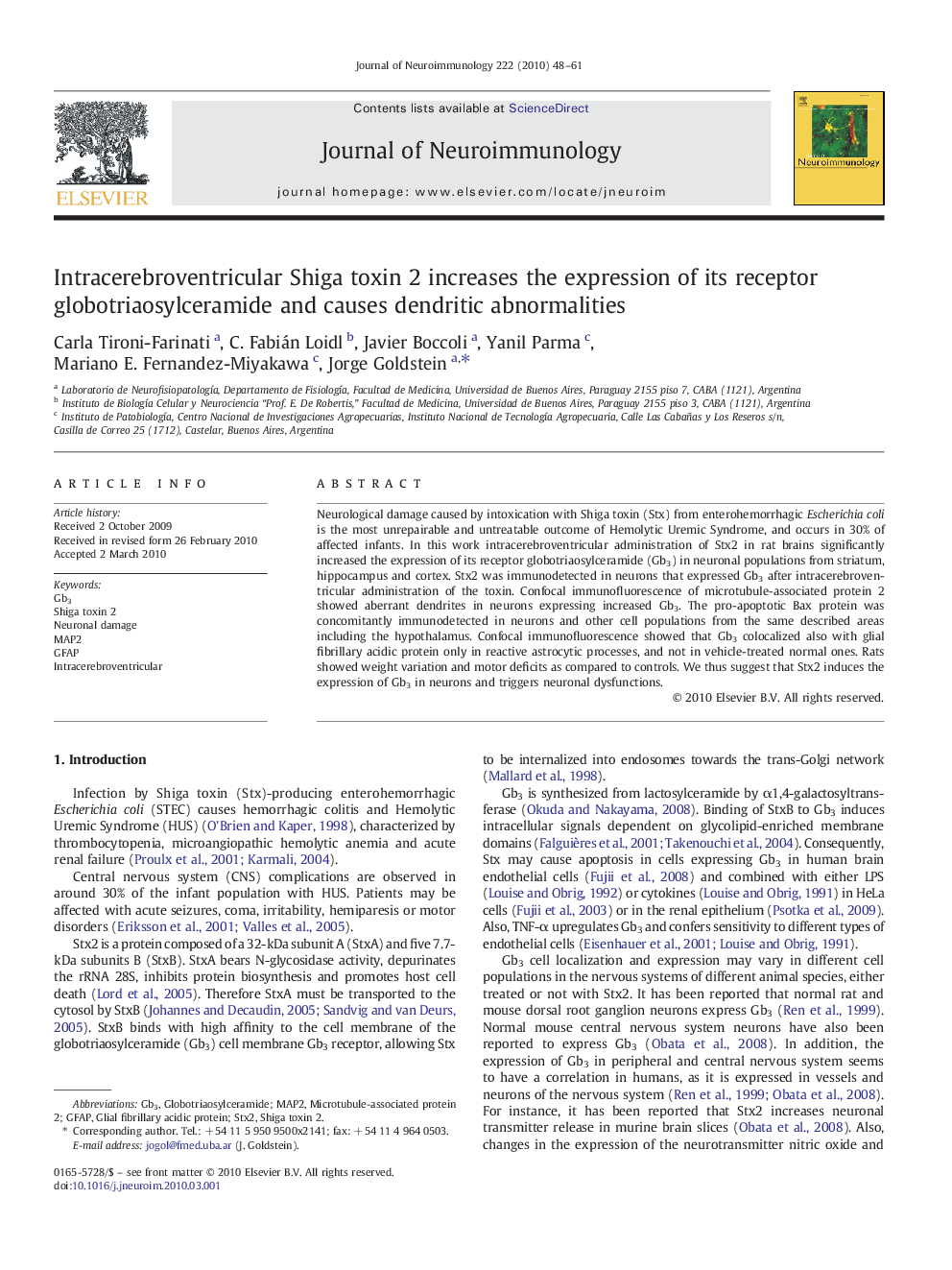| Article ID | Journal | Published Year | Pages | File Type |
|---|---|---|---|---|
| 3064483 | Journal of Neuroimmunology | 2010 | 14 Pages |
Neurological damage caused by intoxication with Shiga toxin (Stx) from enterohemorrhagic Escherichia coli is the most unrepairable and untreatable outcome of Hemolytic Uremic Syndrome, and occurs in 30% of affected infants. In this work intracerebroventricular administration of Stx2 in rat brains significantly increased the expression of its receptor globotriaosylceramide (Gb3) in neuronal populations from striatum, hippocampus and cortex. Stx2 was immunodetected in neurons that expressed Gb3 after intracerebroventricular administration of the toxin. Confocal immunofluorescence of microtubule-associated protein 2 showed aberrant dendrites in neurons expressing increased Gb3. The pro-apoptotic Bax protein was concomitantly immunodetected in neurons and other cell populations from the same described areas including the hypothalamus. Confocal immunofluorescence showed that Gb3 colocalized also with glial fibrillary acidic protein only in reactive astrocytic processes, and not in vehicle-treated normal ones. Rats showed weight variation and motor deficits as compared to controls. We thus suggest that Stx2 induces the expression of Gb3 in neurons and triggers neuronal dysfunctions.
